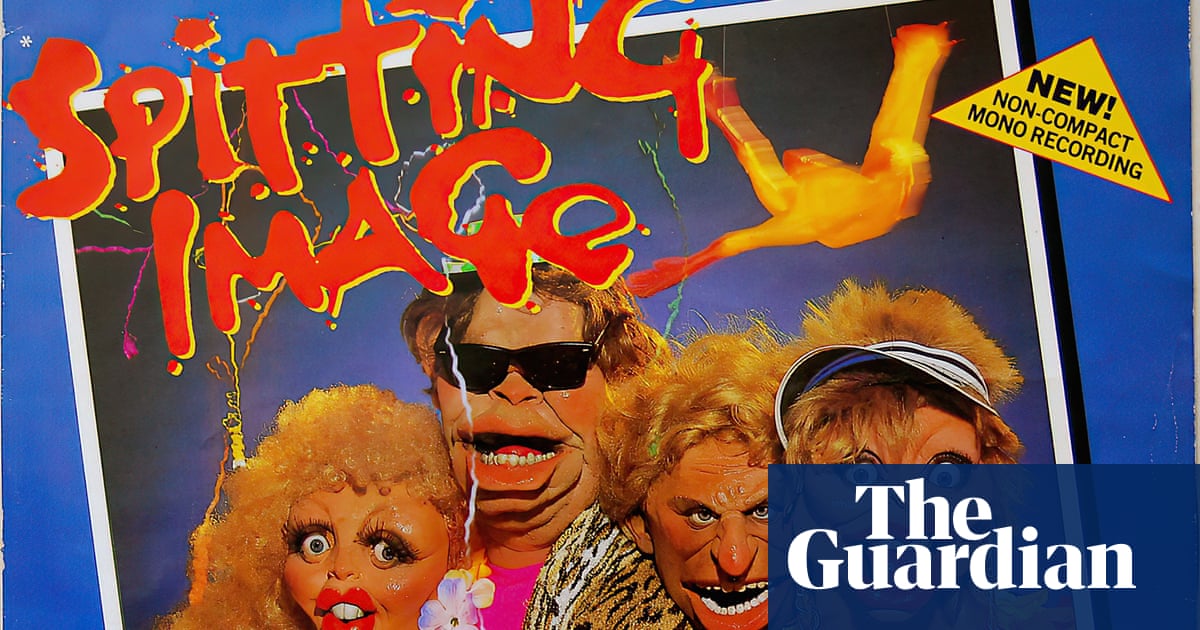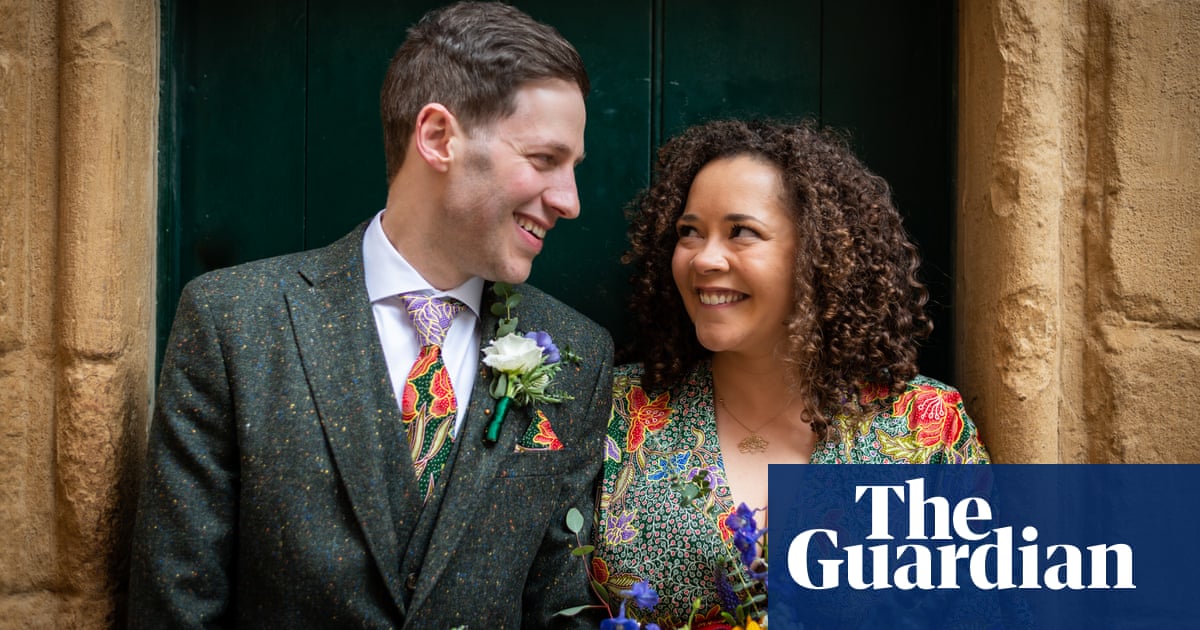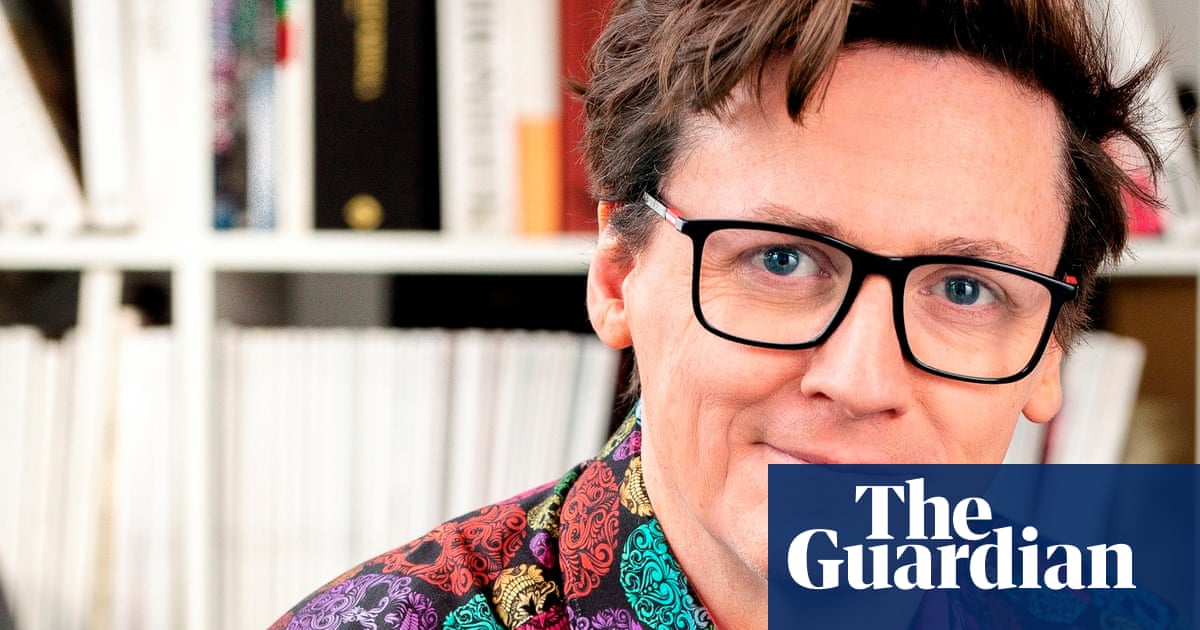
‘The taxi driver who took my wife and I out to dinner last week said: ‘Are you really Roy Hattersley?’” says the former deputy leader of the Labour party Roy Hattersley. “I said: ‘I really am!’ He said: ‘You were famous! You were on Spitting Image!’”
The satirical puppet show was watched by up to 15 million people in its heyday between 1984 and 1996, and is now set to return to our screens – if you subscribe to BritBox that is – with co-creator Roger Law at the helm, and a new wave of writers, voice artists and puppeteers and an Adele-to-Xi Jinping of puppets all raring to take us back to the 80s.
“I remember a kid at primary school telling me about this show where Neil Kinnock pulled out Margaret Thatcher’s pubes with a pair of pliers and thinking: ‘What the fuck?’” says the comedian Matt Forde, who is writing and voicing for Spitting Image 2.0. “People have lamented its absence because it can lampoon people in ways other shows can’t.”
And it made politicians icons – in a way that no party political broadcast ever could. Many of the MPs who were so relentlessly mocked during the original run are remembered more for their caricatures than their policies. So do they not feel insulted? Not at all, if Hattersley is to be believed.
“We all watched it,” he says. “I was just depicted as an old codger, so I didn’t mind. If I had been Kenneth Baker – a slug sliming my way through the garden of life – I wouldn’t have liked it so much. I joked that I was the eponymous hero, because I was the only one who spat. [Hattersley’s puppet had a vastly over-exaggerated bottom lip.] I suspect Norman Tebbit enjoyed being portrayed as a skinhead. I’m sure Mrs Thatcher enjoyed her famous dinner scene: ‘And what about the vegetables? Oh, they’ll have the same as me.’ When politicians are above being laughed at, it’s a very dangerous situation.”
But it wasn’t just MPs who were fair game; one of the keys to the show’s success was its ability to go beyond politics and delve into the increasingly eye-grabbing world of celebrity.
“People used to say: ‘That was funny what you said on Sunday,’ as if it was actually me,” says the boxer Frank Bruno. “I’m not sure why I spoke so slowly … ‘You know what I mean, ’arry?’ It made me sound a bit thick. But I was up there with royalty and prime ministers. It introduced me to kids and ladies who didn’t watch boxing.”
Kate Robbins, who voiced most of the female puppets for 10 years, says the cast weren’t aware of how big it was set to become. “We just looked at it like a nice voiceover job. Steve Coogan was the new guy and kept asking what our five-year plan was. Me and John Thompson would say: ‘Well, we’re going to the pub in a minute …’
“We had a lawyer sitting in the studio saying: ‘Probably best not say that about the Queen Mother,’ but we got away with politicians shagging their secretaries over desks because puppets were this huge legal grey area. I was introduced to Princess Anne at a charity do. She said: ‘What do you do?’ and I wanted to say: ‘I do you, Ma’am.’ Someone told her I was an impressionist on ‘that puppet programme’. She said: ‘You couldn’t do an impression of me, your nose isn’t big enough.’”
Not everyone was quite so magnanimous. “Jeffrey Archer threatened to sue,” says John O’Farrell, a lead writer for 10 years. “Norris McWhirter sued when we superimposed his head on to a naked woman in a subliminal freeze-frame. Edwina Curry kept letting us know she wanted to be in it. You weren’t a proper celebrity until you’d appeared on Spitting Image.”
Keeping things so newsworthy meant the programme had to operate on an extremely tight deadline. “The topical sketches were divvied up on a Thursday,” says O’Farrell. “They did the voices on Friday, the puppets on Saturday. We were adding bits right up until broadcast on the Sunday, like when Gazza broke his leg in the Cup Final on the Saturday afternoon. It was all made in one building in the East End [of London]. Cartoonists drew in one room, model-makers sprayed latex moulds in another and we wrote sketches in the next. It was incredible.”
It’s a model that the new series is keen to follow – although the pandemic has somewhat complicated matters. “Normally we’d all be in big writers’ rooms,” says Forde, “but now Mondays and Tuesdays are over Zoom, Wednesdays and Thursdays I do my voice bits and it goes out on Saturday.”
It wasn’t just the writing that delighted the audience, it was the puppets – something Henry Naylor, one of the original show’s writers, discovered when he launched Headcases in 2008, a poorly received CGI retread of Spitting Image.
“Old Flucky is the most ingenious fellow I’ve ever come across,” says Law of his co-creator, Peter Fluck. “We were scraping a living photographing lifesize 3D caricatures for the New York Times, Newsweek and Time. We thought: ‘Fuck it. If we turn them into puppets, perhaps we can carry on doing the same old shit.’ We didn’t know anybody apart from other wanky artists. We got Martin Lambie-Nairn – who’d designed the Channel 4 logo – to invest in the puppets, and John Lloyd, who was a lot more respectable than us, to format the show. We’d been censored in print, but television was incredible. We’d have Mrs Thatcher as a sheepdog licking Ronald Reagan’s arse clean, and they put it out.”
It’s those puppets that Law credits with the show’s longevity – “the first series was awful, the only reason we got a second series was that the puppets were such a surprise” – so how did they do it? “One puppeteer would work the head and hand, another the eyes and another the other hand,” explains the puppeteer Louise Gold, who voiced and puppeteered the Queen among others in the first two series. “They were human-sized, so they could be dressed from the charity shop. You couldn’t hold them up for long. I remember John Lloyd saying: ‘The more complaints we get, the better.’ But when we started doing Ayatollah Khomeini, we got death threats and had our names taken off the credits.”
Doug Naylor, along with his Red Dwarf co-writer-to-be, Rob Grant, were brought in as lead writers and script editors for the second series, and the show really took off. “The first six episodes were achingly old-fashioned and got battered by the press,” says Naylor. “They had stuff like Hitler living next door to Thatcher. We said: ‘Your puppets are old-fashioned. The show’s not funny.’ They wanted to create something the Guardian would think was brilliant. That was the goal – to be adored by Guardian readers. We got rid of the re-occurring sketches and Ian Hislop and Nick Newman came in every Friday to write up-to-the-minute topical jokes.”
Hislop, Private Eye editor and the familiar team captain of Have I Got News for You, is keen to share the credit around for the uptick in fortunes. “It was a real team effort,” he says. “We’d think: ‘What are we going to do with Douglas Hurd?’ Then Harry Enfield made him sound like a Dalek and we thought: ‘Yup, that’s funny.’ It just came at the right time. We’d had satire in the 60s and surrealism in the 70s. The top satirical political programme was Yes Minister, which was a very elegant deconstruction of James Callaghan’s civil service. Then Spitting Image came on to primetime ITV with this immense rudery.”
Hislop left after the fourth season, and soon found himself mocked on the show. “I fondly imagined there might be some period of grace, like a Trump pardon,” says Hislop. “But no. In a matter of weeks after leaving, a puppet of me appeared with a banana on my head, stuck in court, losing a case.”
Trump will of course loom large in the series, voiced, along with Boris Johnson and Keir Starmer, by Forde. “It’s a fantasy Spitting Image lineup,” he says. “Boris and Trump may be ludicrous political actors, but they can still be lampooned. Trump’s puppet is grotesque. It looks like something that lives on the ocean floor. Doing his voice is the most fun I’ve ever had at work. He’s part Trump, part Cartman from South Park. If he needs to wrestle in a sketch, they’ll say: ‘Can you do Trump wrestling?’ and I have to make Trump wrestling noises into a microphone attached to my laptop while standing in my spare room in my underpants.”
It’s a far cry from the cosy trips to the pub the original cast might have enjoyed, but BritBox are hoping the new series of Spitting Image can imitate the original’s success the way Forde can Donald Trump’s verbal tics, and bring the streaming service its first mainstream success.












